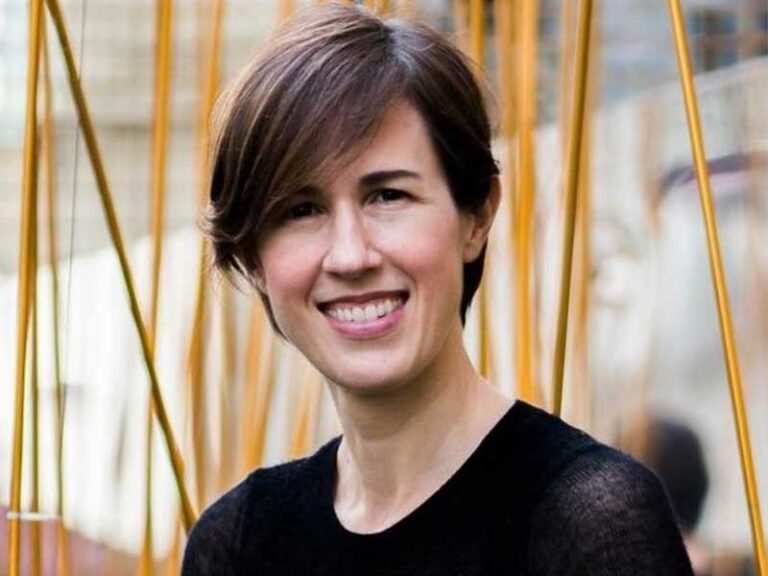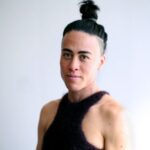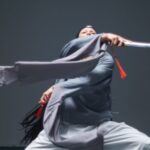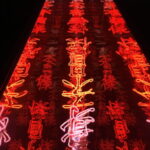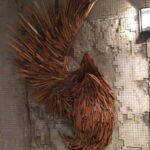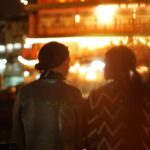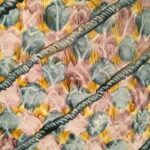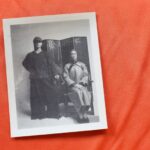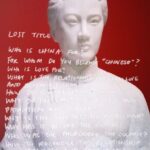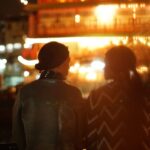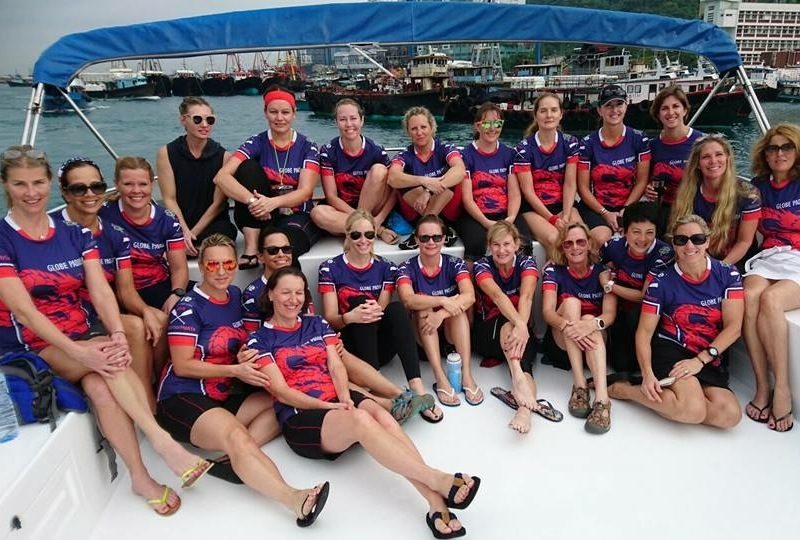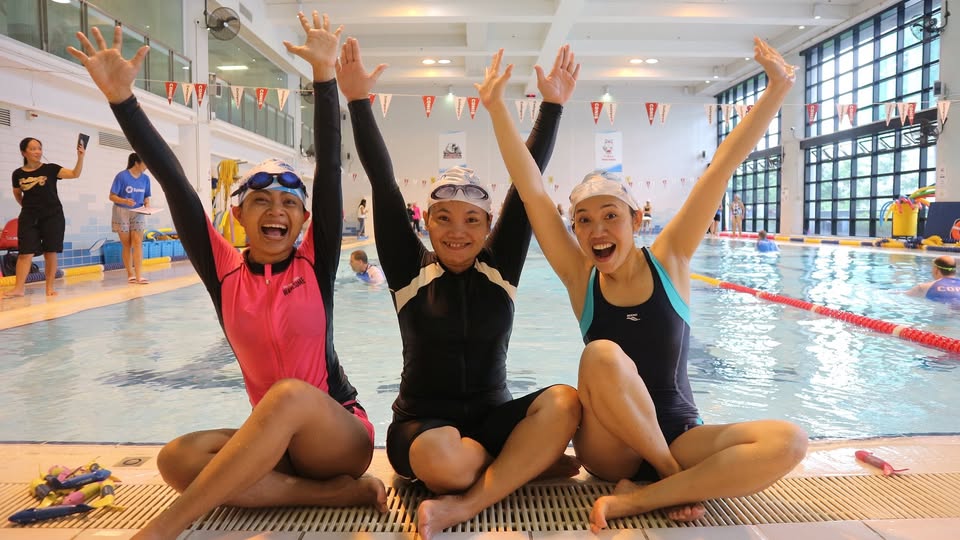To call her a modern day renaissance woman would be an understatement. She’s a Harvard-grad with an MBA from Stanford. She is a trained music composer. Pop into Pure Yoga here in Hong Kong and you might find her teaching a class. She sits on at least three cultural and educational boards and has been honored for her philanthropy. On any given day, she may be giving a talk, hosting a forum, being interviewed or conducting an interview. She is a Hong Kong mom of two young children. And oh yes, Mimi Brown has redefined the art experience in Hong Kong. As the founder of Spring Workshop, an “initiative that brings people together to experiment with the way we relate to art,” she’s brought a fresh and enriched perspective to culture in this city.
The California-native arrived in Hong Kong over 10 years ago, like many of us, baby-in-tow, excited about the new journey and finding her place in this foreign city. She was drawn to the emerging arts scene and the people behind it. And thus Spring Workshop was born. As a pioneer in the revival of Wong Chuk Hang, Brown opened Spring Workshop in 2011 as a huge, modern venue in the factory-filled Aberdeen neighborhood. Spring is one of the first, and presently only, cultural organizations in Hong Kong that provides residencies, and has hosted nearly 200 programs and events since its inception.
Currently on at Spring is Duilian, a multi-media exhibition by Wu-Tsang, a Los Angeles based artist, performer and filmmaker. Duilian is the result of Wu-Tsang’s two residencies at Spring and features a film that interprets the life and writings of the famous Chinese revolutionary Qiu Jin (1875-1907) through visual and martial arts. Accompanying the film is a stunning neon-inscripted, coffin-like piece and whisper-light paper effigies, that will be burned as a special performance.
Mimi Brown, arts ambassador extraordinaire, opens up to Hong Kong Moms:
What is your Hong Kong arrival story?
I moved here sight unseen in 2005 with my husband and a 6-month-old. We were looking for adventure and spun the globe dreaming of Istanbul, Mexico City, Tokyo, Hong Kong. Then we called friends in each city, and Hong Kong won by a long shot. When we first arrived in June, we lived in the old Marriott serviced apartments in Pacific Place with pink shag carpet and matching drapes. We had two months solid of summer rain, so I walked in circles in the mall alone with my baby in a stroller for hours until finally I met Janice Lee, Kelly Gave and Victoria Adamovich. They felt like angels sent from above!
How did you transition from composing music to art?
When I arrived, I didn’t find the music scene, but I what did find was a fascinating art scene and people like Claire Hsu and Tobias Berger, who were leading compelling organizations like Asia Art Archive and Para Site Art Space. So I started attending their programs and loved learning about a whole new world. It was the perfect way to get to know Hong Kong intimately.
How would you describe the Hong Kong “art scene”?
The first word that comes to mind is familial. Having spent most of my time in huge cities like New York, Boston and LA, I cherish that Hong Kong’s art scene is small enough that you can really get to know people – and to support and love them!
What made you want to get involved? What was your initial vision for Spring Workshop?
When I was a musician, there were certain things that were meaningful to me, and these resulted in the characteristics of Spring Workshop: I loved having a refuge where I could work quietly undisturbed by quotidian concerns (Spring’s residency program), meeting people outside my usual realm (Spring’s cross-disciplinary and social nature), having an opportunity to unveil my process at times to gain new insights (Spring’s public programs), and being familial with and supportive of one’s colleagues in an all-for-one mentality (Spring’s partnerships with and support of sister non-profits in HK and abroad). I liked the scene here so much that I wanted to create a place that could offer that.
How has that evolved?
Spring Workshop has become a much more deeply-rooted creation than I imagined. It has a momentum of its own now with a texture created by the people we engage with.
What is next for you after the five-year project term?
I would like Spring to have a period where it can lay fallow for a while like a field. Then I’ll plant new seeds and see what grows.
What do you love best about running this organization?
The people. Spending my days with diverse, creative, professional, intelligent, hardworking, and kind folks is the jewel of the whole experience.
What has been one of the most memorable experiences you have had through Spring?
My beloved friend and Spring advisor Claire Hsu had seen a remarkable economist and singer named Sumangala Damodaran perform songs of protest in India, and asked if we could bring her to Hong Kong. So we made a plan and brought her entire group of musicians to Hong Kong with her. We asked the local bassist from Hong Kong New Music Ensemble (who didn’t know their music) to play with them to create an exchange, but none of their songs were notated, so I got to spend the day writing out arrangements. On the evening of the performance, Claire and I sat outside on Spring’s terrace with our children and 100 audience members rapt as we took in the incredible music. I was so happy and transported by the whole experience that I forgot to change out of my ratty housedress and wore it straight to the concert!
What are the highlights of “art month” for you in Hong Kong?
I am a fan of how the Hong Kong galleries and non-profits pull out all the stops: Asia Art Archive’s booth at Art Basel that hosts open conversations on various topics that anyone can join; Para Site’s show based on their Migrant Domestic Worker’s Project; Things That Can Happen’s intervention in Sham Shui Po; Shahzia Sikander at Asia Society; the new space Neptune in Chai Wan; and the Intelligence Squared debate.
Any tips for those looking for a little culture in Hong Kong? Or tips for those looking to explore art in depth locally?
- Sign up for the mailing lists of Hong Kong’s art organizations and show up to the programs (see some links below).
- Go hear the wild concerts offered by Hong Kong New Music Ensemble; I went to one where I heard a cactus played! And yes, it sounded gorgeous, if twangy.
- Come to an open event at Spring Workshop and get to know your fellow Hong Kong culture vultures.
- And don’t forget to take your kids to all these things – and bring their Kindles for when they need to check out after 30 minutes.
You also teach yoga, are on various committees and seem to have a very full life! How do you find the time to pursue so many interests?
I have Nespresso machines by my bed, in my kitchen and at my office.
As a “Hong Kong Mom” what are some ways you balance work and “mom life”? Any tips you can offer those trying to “do it all”?
So much of being a mom revolves around your family’s needs – and we all know that those responsibilities will expand infinitely into whatever time you give them. So you have to wake up in the morning and plan to do something that delights you every day. If you don’t focus on this, the rest of the family’s interests and schedules will swamp your own. Then once you have delighted yourself, you have more energy to get everything else done – to the delight of everyone else.

